All stock codes associated to this product
112560020G, 11256-00-20G, VCSRX4704G00OCFE, VCS-RX4704G00OCFE, 4895106279896
Overview
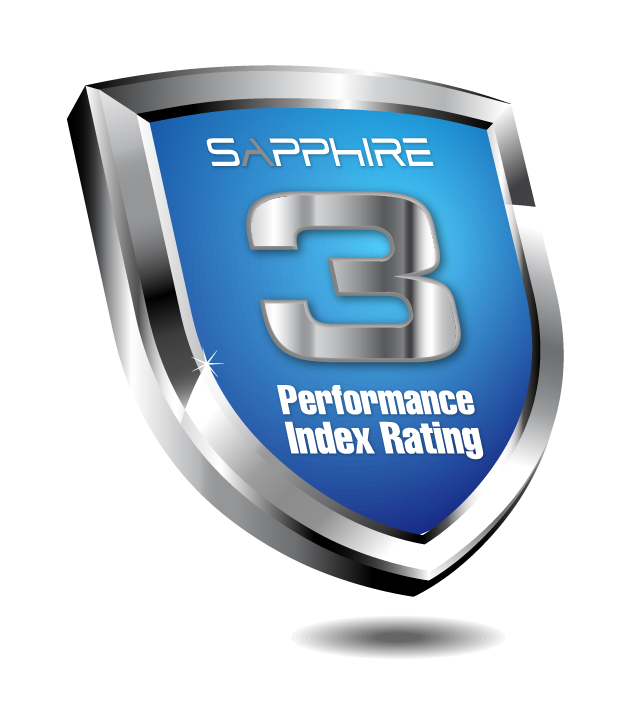
The SAPPHIRE Radeon⢠RX 470 is the next big thing in mainstream 1080p gaming.
Compared to the previous R9 270 generation GPU, playing on the RX 470 means
performance up to 2.4x better in latest titles such as Total War: WARHAMMER or
DOOM. Engineered with power savings in mind, the 4th generation Graphics Core
Next chip maintains the typical board power of around 170 W. Polaris-powered
GPU-s also mean improved geometry engine, increased cache and native
asynchronous shaders for unmatched efficiency in DirectX 12.
Introducing AMD LiquidVR
LiquidVR⢠is an AMD initiative dedicated to making VR as comfortable and
realistic as possible by creating and maintaining whatâs known as âpresenceâ â a
state of immersive awareness where situations, objects, or characters within the
virtual world seem âreal.â Guided by close collaboration with key technology
partners in the ecosystem, LiquidVR⢠uses AMDâs GPU software and hardware
sub-systems to tackle the common issues and pitfalls of achieving presence, such
as reducing motion-to-photon latency to less than 10 milliseconds. This is a
crucial step in addressing the common discomforts, such as motion sickness, that
may occur when you turn your head in a virtual world and it takes even a few
milliseconds too long for a new perspective to be shown.
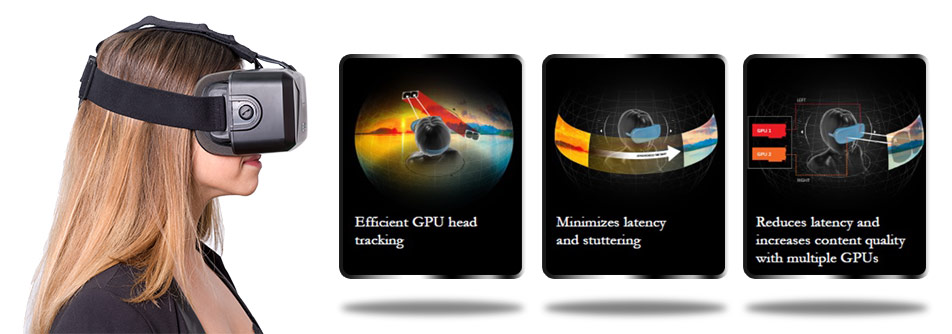
AMD XConnect⢠Technology
Plug in and game on with AMD XConnect technology.
Now itâs easier than ever to connect and use an external Radeon⢠graphics
card. With AMD XConnect⢠technology, external GPU enclosures configured with
Radeon⢠Graphics can easily connect and disconnect to a compatible ultrathin
notebook or 2-in 1 over Thunderbolt⢠3 at any time, just like a USB flash
driveâa first for external GPUs!
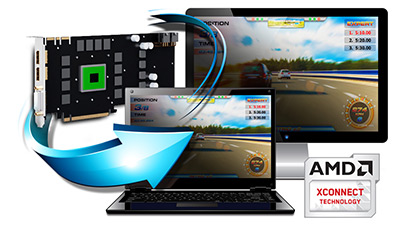
HDR Ready
High Dynamic Range (HDR) is a state-of-the-art technology for gamers and
cinephiles that care deeply about the display quality of their TV or monitor.
Modeled after the acuity of human vision, HDR vastly expands the range of colors
and contrast ratios that can be shown by compatible displays. HDR-ready games
and movies played on an HDR display appear strikingly sharp, colorful, and
vivid, with enhanced contrast and sophisticated nuance compared to even the most
stunning SDR content.
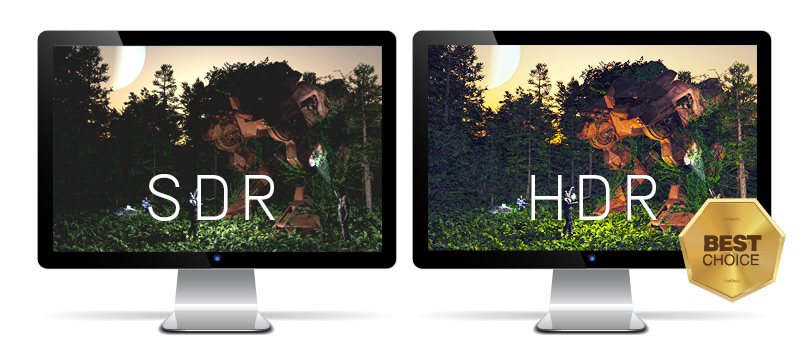
Virtual Super Resolution

Virtual Super Resolution (VSR) is an AMD feature that is game and engine
agnostic to simulate Super-Sampling Anti-Aliasing (SSAA) in games that do not
have native SSAA support. VSR can also be used in conjunction with other native
in-game anti-aliasing for even more game graphics-setting control. VSR allows
games to render at higher resolutions (up to 4K; see the Virtual Super
Resolution Support table, below) and then rescales them down to a lower native
display resolution. Using this, you can get quality that rivals up to 4K, even
on a 1080p display while playing your favorite games.
AMD Freesync technology
No stuttering. No tearing. Just gaming.
AMD FreeSync⢠technology allows a compatible graphics card and monitor to
dynamically change frame rates for the optimum display quality without tearing
or stuay.
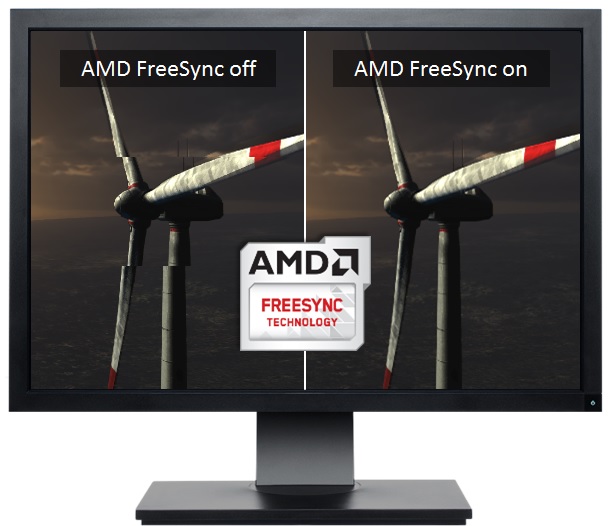
Industry-Standard Displayport
Freesync uses industry-standard displayport Adaptive-Sync Eliminates screen
tearing without all the usual lag and latency
-
Synchronizes the refresh rate of a
compatible monitor to the frame rate of your content, however much it
varies
-
Monitor partners are validating with
drivers from AMD now
DirectX® 12

DirectX® 12 is a new, âconsole-likeâ graphics API from Microsoft® that
empowers game developers with more direct and obvious control of PC hardware.
This direct or âexplicitâ control better exposes the hardware resources of AMD
Radeon⢠GPUs to yield higher hardware throughput and, ultimately, more
performance for users. To put it simply: much more efficient hardware through
smarter software! At the discretion of a game developer, this superior
efficiency can be spent on higher framerates, lower latency (VR), lower power
consumption, better image quality, or some calculated balance of all four. In
any scenario, gamers stand to benefit greatly from choosing AMD hardware to run
their favorite DirectX® 12 game.
AMD Eyefinity Technology
Multidisplay technology for gaming, productivity and
entertainment
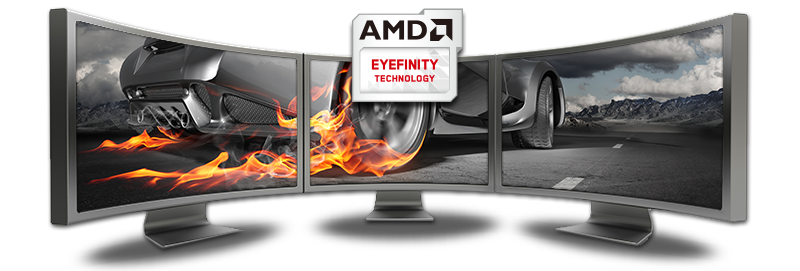
We are taking you beyond the boundaries of traditional PC displays. AMD
Eyefinity technology expands the traditional limits of desktop computing by
multiplying your screen area. With multiple monitors, games become more
immersive, workstations become more useful and you become more productive (an
average of 42% more productive according to one study).
Take your PC games to the next level of reality and immersion. Most modern
games look great on three screens, and only AMD Radeon graphics offer you the
ability to play across five screens for an eye-popping gaming experience. Other
combinations and configurations with up to six screens work too.1 Create your
dream display.
Frame Rate Target Control

Frame Rate Target Control (FRTC) enables users to set a target maximum frame
rate when playing an application in full screen mode; the benefit being that
FRTC can reduce GPU power consumption (great for games running at frame rates
much higher than the display refresh rate) and therefore reduce heat generation
and fan speeds/noise on the graphics card.
Frame Rate Target Control caps performance not only in 3D rendered in-game
scenes, but also in splash screens, loading screens and menus, where frame rates
can often run needlessly into the hundreds of FPS. Users might wish to set a
very high cap just to limit wasteful FPS like that seen in menus and such, while
still taking advantage of the responsiveness given by FPS well beyond 60.
Specifications
|
GPU |
2048 Stream
Processors |
|
14 nm
FinFET |
|
4th Graphics Core
Next (GCN) |
|
932 MHz Engine
Clock |
|
1216 MHz Boost
Engine Clock |
|
Interface |
PCI-Express
3.0 |
|
Memory |
256 bit Memory
Bus |
|
GDDR5 Memory
Type |
|
Up to 1750 MHz,7000Mbps
Effective Memory Clock |
|
4096 MB
Size |
|
BIOS
Support |
UEFI
BIOS |
|
Displays |
Maximum 4
Outputs |
|
Output |
1 x HDMI
2.0b |
|
3 x DisplayPort
1.4 |
|
Resolution |
3840x2160 (120Hz)
Pixel DisplayPort Resolution |
|
38402160p (60 Hz) HDMI
Resolution |
|
API |
OpenGL
4.5 |
|
OpenCL
2.0 |
|
DirectX
12 |
|
Shader Model
5.0 |
|
Feature |
AMD
CrossFire |
|
FreeSync
Technology |
|
AMD
Eyefinity |
|
AMD Liquid VR
Technology |
|
AMD Virtual Super
Resolution(VSR) |
|
AMD TrueAudio Next
Technology |
|
Dolby TrueHD and DTS-HD
Master Audio Support |
|
AMD Xconnect
ready |
|
Universal Video Decoder
(UVD) |
|
DirectX 12
Optimized |
|
HDR
Ready |
|
Frame Rate Target
Control |
|
Cooling |
Blower |
|
Form
Factor |
2 Part Slot
Occupied |
|
242.5(L)X 111.5(W)X 41
(H)mm Dimension /mm |
|
Power
Consumption |
<150W |
|
OS |
Windows 10Windows
7 |
|
System
Requirement |
500 Watt Power Supply
(Suggestion) |
|
1 x 6-pin AUX Power
Connector |
|
CD-ROM or DVD-ROM drive
for installing software |
|
PCI Express 2.0 or
higher version based PC is required with one X16 lane graphics slot
available on the motherboard in order for the card to be compatible
with |











